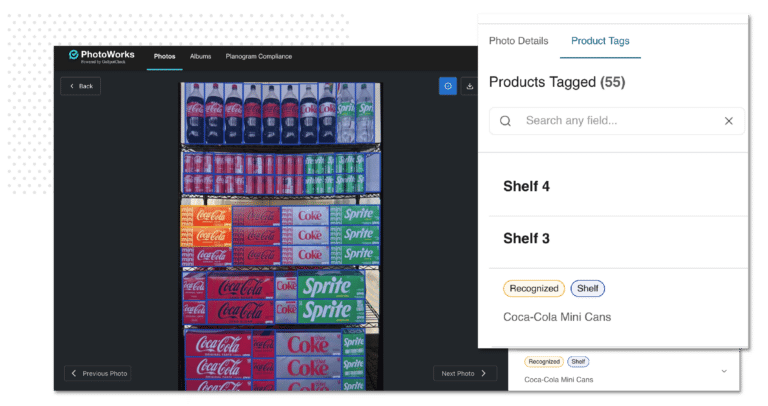What Does a Brand Manager Do?
When you think of the best brands, what comes to mind—and why? Patagonia, for their stand on environmental preservation and sustainability? Apple, for their innovation? Nike, for their iconic slogan? Disney, for their overall sense of magic and wonder? Whatever comes to mind, all of these brands have something in common: not only do they produce high-quality goods, services, and experiences, but they have incredible, unmatched branding.
There is a common misconception that a brand is a logo, a slogan, or the colors on the website. While these elements can help make up a brand, there is much more that goes into creating and maintaining a brand.
Obviously, today’s most iconic and recognizable brands are experts in brand management (and their extensive resources don’t hurt, either). While not everybody can be the Apples or the Disneys of the world, organizations can take their brands to the next level with the help of a strong brand manager.
What is Branding?
Before understanding the role of a brand manager, it’s important to understand branding. While the logo, slogan, and website are part of the brand, the brand itself is the thoughts, ideas, images, and feelings that are associated with your product or organization. It’s everything—tangible and intangible—that the buyer experiences when coming in contact with your business.
There are six (or more or fewer, depending on who you ask) main elements that compose a brand, including:
- Identity: Brand identity is the visual representation of your company, including logos, colors, font, packaging, and website design. This is often the first touchpoint consumers have with a brand, so it’s important to make a strong impression and stand out from competitors. It’s been found that using the same color palette consistently across all channels can increase brand recognition by up to 80%.
- Voice: Brand voice is the tone or language that is diffused throughout your marketing communications. It helps to give your brand personality while also informing, selling, or entertaining.
- Promise: This typically includes a company’s vision, mission, and value propositions.
- Values: Brand values are the principles and beliefs that your organization stands for. Core values can shape a company’s culture, guide employees, and play a factor in influencing an organization’s corporate social responsibility (CSR).
- Positioning: Brand positioning describes how your company is positioned in the market in the mind of consumers. It is used to position your brand apart from competitors and drive success—brands that are consistently presented across the market often see a revenue increase of 10-20%.
- Story: A brand story is the cohesive narrative that surrounds your brand, mission, values, and vision. Brand storytelling is essential in establishing an emotional connection with consumers; one study found that customers who have an emotional connection with a brand are 71% more likely to recommend it to others.
All of these elements should work together to create a holistic, distinctive brand that elevates your organization and your marketing strategy. Once established, it is then a brand manager’s responsibility to preserve, develop, and leverage the overall brand to ensure long-term success.
What is a Brand Manager?
A brand manager’s role is to develop a marketing strategy and brand image that will set the company apart in the market while building long-lasting relationships with customers. It’s more than just designing a logo or coming up with a few company values; creating a brand is about telling a story that permeates so vividly through every touchpoint it should be hard to ignore.
Presenting a brand consistently across all platforms can increase revenue by up to 23%, and a significant aspect of a brand manager’s job description is creating and confirming this alignment through ongoing research and implementation. They oversee the entire brand strategy, but may also have a hand in any day-to-day brand-related activities that may arise. Some typical responsibilities may include:
- Creating, updating, and distributing brand guidelines throughout the organization
- Conducting market research and analyzing data for trends, insights, and opportunities
- Ensuring advertising, social media, and email campaigns follow the brand voice, tone, and positioning
- Collaborating with other in-house teams to ensure brand alignment
- Working hands-on with marketing and Product Managers to assist with product launches
- Conducting research on customer service, brand image and awareness, and overall brand sentiment
What’s The Difference Between Marketing and Brand Management?
For many, the line between brand management and marketing can be a little blurred. After all, they are both drivers of brand awareness and growth, and work very closely to push engagement and, ultimately, sales. However, when it comes to the nitty-gritty, these roles differ quite a bit. (However, in many start-ups and smaller companies, marketers and brand managers are one and the same).
While a brand manager is responsible for bringing a brand to life and generating strong brand equity, marketing managers focus on the specific marketing campaigns that will drive multi-channel engagement, awareness, and leads. Together, brand managers and marketers take a cross-functional approach to reaching KPIs.
What Qualities are Required for An Ideal Brand Manager?
Since marketing and brand management are so similar, individuals in these roles typically have the same skills and qualifications, including:
Communication Skills: Brand managers essentially create messaging on behalf of the brand, so strong writing and communication skills are a must. In addition, brand managers need to communicate with marketing teams and internal stakeholders.
Social Media Management: It can be helpful for brand managers to be social media and tech-savvy, including being proficient in design, copywriting, and other tech skills.
Staying Up-To-Date on Market Trends and Research: It’s essential for brand managers to remain informed on current market trends and competitor activity, especially in a fast-paced industry when it’s crucial to stay ahead of the curve.
Analytical Skills: Building a winning brand isn’t all about logos and social media; successful brand managers also take a data-driven approach to quantifiably measure brand efforts and performance.
Customer Focus: A brand’s success comes from its customers, so it’s critical for brand managers to adopt a customer-centric approach and tailor their efforts to the customer experience.
Project Management: Since brand managers often work with so many departments, good project management skills are a must.
How Brand Managers Can Take Their Brands to The Next Level
If there’s one thing to remember about achieving operational excellence, it’s that your team members are the ones who will be putting your strategy to work. Frontline employees are the individuals who are out on the floor handling day-to-day operations, and the ones who are most likely to spot inefficiencies and areas of process improvement when doing daily audits and checklists. To achieve your operational excellence goals, you’ll need to gather input from these team members on how your processes are currently working, and how they could be improved. Instead of taking a top-down or bottom-up approach, it can be valuable to encourage a positive organizational culture by gaining insights from directors, managers, and frontline workers equally. Everyone can play a role in making your company better.
Furthermore, by fostering a culture of continuous improvement and learning, organizations can empower their employees to work toward excellence goals. One report suggested that when team members feel valued, inspired, and highly engaged, they can be up to 125% more productive than other employees. When every member of the company is aligned with the same mission of continuous improvement, decisions can be made and implemented more quickly.
1. Be Transparent
88% of consumers say that authenticity is important to them when choosing a brand, so it’s valuable to be transparent and genuine with your branding initiatives. Today’s consumers are more research-savvy than ever before and want to know everything about the product they’re buying and the organization they’re buying from. Being honest about company values and missions can strengthen trust and enhance emotional connection and brand loyalty.
2. Be Human
In addition to being authentic, your brand should also be approachable. Ad copy and long-form content should be easily digestible and understood, leaving behind any industry jargon or unnecessary details. Featuring team members on the website or showcasing them on social media can add a human element to the organization and create more trust with consumers.
3. Try User-Generated Content
Instead of the brand promoting itself, user-generated content (UGC) leverages customers or even employees to create and promote content on the brand’s behalf. UGC has exploded over the last few years, with 84% of consumers saying they trust peer recommendations above all other sources of advertising.
4. Enhance Employee Pride and Engagement
Sometimes, you don’t have to create a multi-channel strategy to elevate your brand; you can look within your own organization. When engaged and fulfilled, employees can be some of the best advocates for your brand. Having a brand that your team members can believe in can not only drive employee passion and purpose, but also productivity, with highly engaged teams showing a 21% greater profitability.
Create A Winning Brand With A Strong Brand Manager
Your organization’s brand is essential in building a relationship with your current customers and making sure they—as well as your target audience—know what to expect when interacting with your company. Are you purposeful and inspiring, funny and quirky, innovative and cutting-edge? Whatever your brand is, it needs to be clear and consistent throughout your messaging, visuals, and actions.
Brand managers can help organizations take their brand from simply a logo to a living, breathing story—one that can set themselves apart in the market while enhancing equity, loyalty, and sales.
Want to take your brand to the next level? Follow FORM on LinkedIn for industry news, marketing strategies, and company updates.




